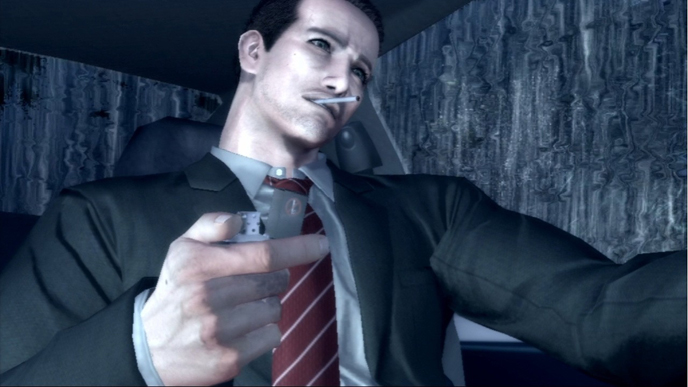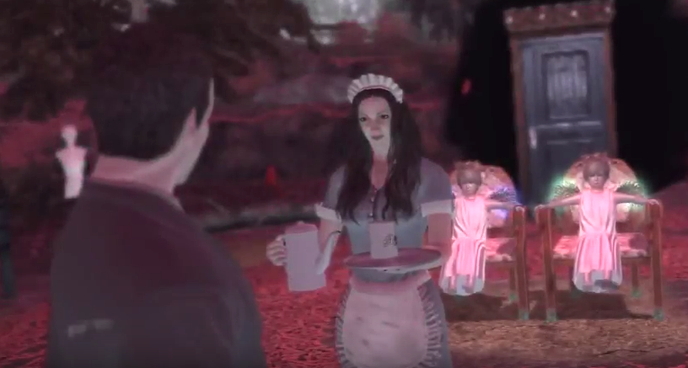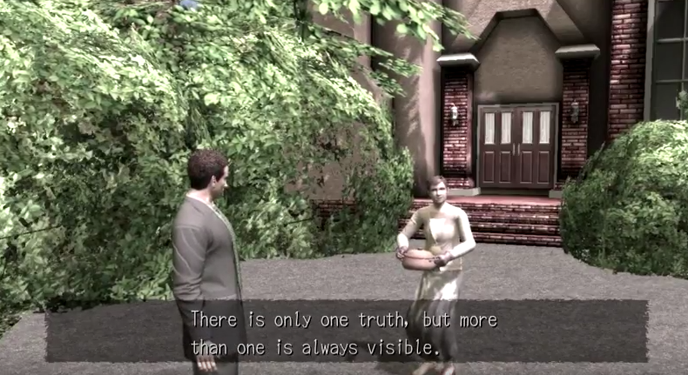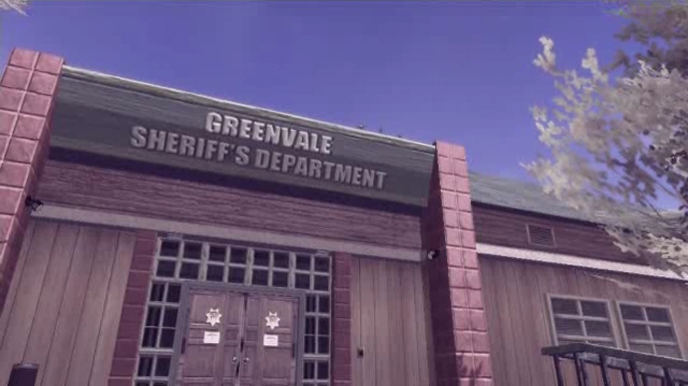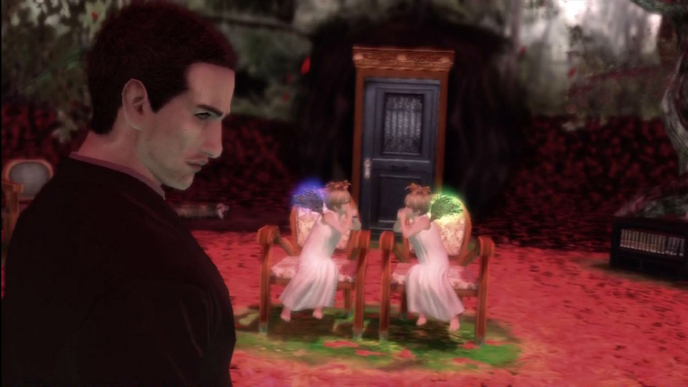The 7 Most Striking Similarities Between Twin Peaks and Deadly Premonition
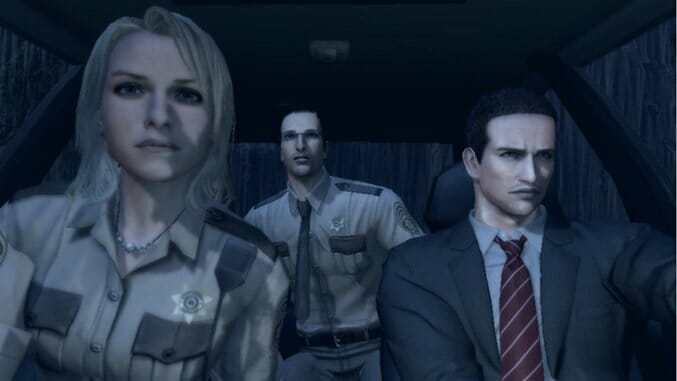
Growing up in Western Washington is a unique experience, one that can instill a kind of possessiveness when you see it depicted in books or on film. Any criticism of its portrayal from an insider always has a whiff of sibling entitlement. Outsiders may maintain a sense of awe and reverence that reflects the forbidden mystery of our forests and wetlands, but only we’re allowed to pick on the Pacific Northwest. The combination of rural isolation and poverty puts us on the defensive. Unless you’ve lived it, you don’t get to complain.
Speaking as a woman who grew up in one of the many logging towns that inspired Twin Peaks, there aren’t many artists who “get it right”. Few are able to resist the lurid temptation of sensationalizing or exotifying the seemingly bizarre nuances of small town life. David Lynch (along with series co-creator Mark Frost), however, did a fair job. In attempting to illuminate the drama and personal complications that come when “everybody knows everybody”, he also established a very sympathetic portrait of the good he believes still resides in the countryside. While surreal and inexplicable, Twin Peaks always struck me as hopeful. It naively believed in a world where men are good people; the women, though flawed, are handled with compassion. Against decades of “lovable asshole” sitcoms and irredeemable antihero dramas, the strength of character in the noble Cooper, the pure and steadfast Major Briggs, the quiet but dependable Deputy Hawk, the humble hero Harry Truman, the tenderhearted Andy Brennan, the adorably lovestruck Gordon Cole, the loyal and long suffering Ed Hurley, the stalwart and principled Albert Rosenfield, and the affable Pete Martell are refreshingly optimistic, despite Lynch’s desire to expose the seedy underbelly of small town living. Like the show itself, Lynch showcases a humanizing and vulnerable duality, revealing that for all his darkness, he still cherishes the light.
It’s perhaps due to this same humanity that Lynch succeeds in his portrayal of the Pacific Northwest where so many others have failed. While, for example, The X-Files or Twilight use the setting as a lazy narrative shortcut meant to evoke mood and mystery, Lynch seems to be as caught up with his characters as the audience is. He is allowed an unrestrained indulgence of his creative fascinations and thus, his stories are intertwined with a patient attention to detail that is equally honest as it is subtle.
Lynch’s art is often his attempt to translate random, obtrusive imagery without analyzing or questioning its meaning, a trait that is tied deeply to his comfort with the horrific and the surreal (and, it should be noted, is responsible for the improvisational elements of the development of Twin Peaks, including multiple key plot points and the creation of the characters Maddy and BOB). In that sense, it comes as little surprise that Twin Peaks found an enthusiastic audience in Japan, where generally the population is more comfortable with a lack of resolution in narrative fiction. When Deadly Premonition, the work of the eccentric Swery65, emerged, it had already been through a host of setbacks, including a port to the Xbox 360 from the PlayStation 2 before it was even released. By the time the Twin Peaks homage hit retail shelves, the graphics and conventions were already massively outdated. And yet, somehow the low budget feel only enhanced the campiness established by the game’s primary source of inspiration, giving it an antiquated feel that was right at home with small town themes of remoteness and isolation. Add to that a labored internal timing system that demanded the player live on a strict schedule and drive to the game’s many remote locations in real time and well, it was a decent mirror of the mundanity of rural life.
Many critics, like myself, cite Jim Sterling’s “Blatantly Better” series as the moment they took interest in Deadly Premonition. Celebrating the game’s charming, almost clumsy, brand of goofiness, the community has come to largely embrace its imperfections, turning the title into a cult classic. In turn, the surge in popularity has resulted in a port to PC, then an entirely new release on PlayStation 3 with updated cutscenes. A boardgame based on the videogame is also now on the horizon.
Both Twin Peaks and Deadly Premonition are what happens the creative fixations of an eccentric go unchallenged and uninterrupted. With the reboot of Twin Peaks approaching, it’s time to revisit all the weird and wonderful ways in which Deadly Premonition sought to capture its appeal. Here are some of the strongest similarities between the two.
Agent Dale Cooper/Agent Francis York Morgan
There is little doubt that Agent Francis York Morgan from Deadly Premonition was based largely on Agent Dale Cooper from Twin Peaks. In fact, it’s said that when Deadly Premonition (then called Rainy Woods) was initially criticized for its similarities to Twin Peaks, the appearance of York was altered so as to less resemble Kyle MacLachlan, the actor who portrays Agent Cooper.
The heroes of their respective stories, Agent Cooper and York have much in common, most notably their habit of speaking out loud to a person who isn’t there (in Cooper’s case, Diane, his secretary to whom he dictates notes on his tape recorder. In York’s case, his alternate identity/invisible friend Zach). They also love a good cup of coffee.
Agent Cooper is one of my favorite characters in the history of dramatic fiction, I think largely because he is good and pure in a way that restores faith in human decency. Having watched The Art Life and heard Lynch talk about his childhood, it seems Cooper is somewhat influenced by Lynch’s memories of his father, whom he describes as kind, and fair. Cooper is also reminiscent of Lynch’s time during the Boy Scouts, arguably the happiest era of the artist’s life. In many ways, Coop is the embodiment of Lynch’s hopes and ideals.
Cooper has strength of character, and without it, no Twin Peaks homage would be complete. York may borrow a lot from Coop, but in doing so, became one of the most endearing characters in videogames.
Laura Palmer/Anna Graham
Both Laura from Twin Peaks and Anna from Deadly Premonition fill the role of tragic, misunderstood heroine. They are beautiful blond young women, not yet out of high school, who are beloved by the town. They lead double lives filled with illicit underage sex, prostitution, and drugs. Both are murdered in a shockingly violent way, and the loss of their lives are felt deeply in their communities. Both stories open with the discovery of the young woman’s body. And both had a best friend dragged into the events surrounding their deaths.
The full name of the character in Deadly Premonition, Anna Graham, is even thought to be an homage to Twin Peaks. Anna is similar to Annie, the name of Dale Cooper’s love interest in the second season, who was played by actress Heather Graham.
Margaret aka Log Lady/Sigourney aka The Pot Lady
Among the more blatant and obvious details lifted from Twin Peaks and applied to Deadly Premonition is the character of the Pot Lady. The Pot Lady is first encountered while driving through the streets of Greenvale. Missing one shoe and muttering to her pot, she asks York to drive her around town, yelling at the pot’s behest, much like The Log Lady, who often speaks on behalf of her log.
The supplementary book The Secret History of Twin Peaks, by series co-creator Mark Frost, provides some intriguing backstory on the Log Lady’s character; apparently she was abducted, along with two other children (who also became key residents in the saga of Twin Peaks) in the 1950s and was never the same. She later married, but her husband was killed on their wedding night by a fire in a nearby ravine. The log she carries is cut from one of the trees that fell in the place where he died, suggesting that the log itself carries his spirit (and according to Deputy Hawk, many others as well). This is likely a reflection of the show’s suggestion, as with the story of Josie, that a soul can be trapped in wood.
The Pot Lady, meanwhile, is mostly a comic relief sidequest carrier that does the pee-pee dance while ordering York around. In that sense the characters are very different and serve opposite purposes in their respective stories. Nonetheless it’s easy to see where the Deadly Premonition character first came from.
The Sheriff’s Department
Forty minutes east of Seattle is the town of North Bend. The area between its tiny four corner stop all the way down to Snoqualmie Falls was the inspiration behind Twin Peaks. And there you can visit the building that served as the shooting location for the TV show’s police station, which also served as the basis for the one in Deadly Premonition (Alan Wake, a game that also takes place in Western Washington and is inspired in part by Twin Peaks, also replicated this key location).
The building is actually an office of the Weyerhaeuser Mill, with the addition of a sign for the Twin Peaks Sheriff’s Department. In some shots you can actually see the sawmill in the background.
The Red Room
The Black Lodge is perhaps the most mysterious location depicted in all of Twin Peaks, and its backstory, while perhaps not widely known or understood, is deeply unsettling. Deputy Hawk, a member of the Nez Perce tribe, claims the Black Lodge (and its opposite, the White Lodge) pertains to the beliefs of his people, saying in an explanation that defies summary:
“There is also a legend of a place called the Black Lodge. The shadow-self of the White Lodge. The legend says that every spirit must pass through there on the way to perfection. There, you will meet your own shadow self. My people call it ‘The Dweller on the Threshold’ […] But it is said, if you confront the Black Lodge with imperfect courage, it will utterly annihilate your soul.”
The Black Lodge and White Lodge are connected by The Red Room, said to be a “waiting room” between realms. Where a person ends up seems to depend on their spiritual state upon entering the room. Major Briggs, being of pure heart and having approached the Glastonbury Grove (the portal to the Lodges) with love, experienced the White Lodge, where the spirits that rule over man and nature are said to reside. Dale Cooper, however, in approaching the portal with fear, is trapped in the Black Lodge for 25 years, leading to the beginning of the Twin Peaks series reboot.
Deadly Premonition doesn’t have a Black Lodge per se, but Agent Morgan experiences a similar state of being in a Red Room of his own. In his dreams he is sometimes trapped in an “other” place, seemingly set in a crimson forest, where he sees visions and meets people he has yet to see in real life. The color red also plays heavily into this alternate dimension of reality, symbolizing violence and perhaps, in the case of Twin Peaks, a disruption to its spiritual duality.
In these Deadly Premonition scenes are remnants of the edits made to the game after it was accused of being too much like Twin Peaks. Early footage depicts the blonde twins as two little people; a little person called The Man From Another Place is among the residents of the Black Lodge and an ongoing player in the saga of B.O.B. and the One Armed Man.
RR Diner/A & G Diner
In my experience, there are far fewer of those highly romanticized countryside diners in Western Washington than fiction would have you believe. They exist, but are often too expensive for those living on a logging salary or government assistance. Nonetheless, the RR Diner from Twin Peaks and thus, the A & G Diner from Greenvale, is based on an actual restaurant in North Bend, the town that inspired Twin Peaks. Called Twede’s Cafe, they do indeed serve a very fine cup of coffee, and the cherry pie is superb (as with the Sheriff’s Department, this location too was replicated later in Alan Wake).
The Great Northern/Great Deer Yard Hotel
In both Twin Peaks and Deadly Premonition there is a large, woodsman-inspired hotel where the main character stays, based on the Salish Lodge, the actual hotel that sits on Snoqualmie Falls, which can be seen in the opening credits of Twin Peaks. In Agent Francis York Morgan’s room in the Great Deer Yard Hotel, a picture of the falls can actually be seen hanging above his bed, suggesting the location is based on The Great Northern, and in turn, the Salish Lodge from the real life Snoqualmie, WA. While the exterior may not look much the same, the interiors are undeniably The Great Northern.
Beyond these clear cut examples, there are other little hints as to the influence of Twin Peaks on Deadly Premonition. For example, a picture of Laura Palmer can be seen in Anna Graham’s room. The signs leading into Twin Peaks and Greenvale are visually similar. The character Deputy Thomas MacLaine from Deadly Premonition is also very similar to Andy Brennan in Twin Peaks, with whom he shares a common occupation and demeanor (both are tall, lanky, socially timid, and frequently overcome with emotion during the events of their respective stories). There is also a transgender character that works at the police station in Deadly Premonition, likely a reference to Denise Bryson, played by David Duchovny in Twin Peaks.
For more details and crossover tidbits, be sure to check out this great article from Pioneer Project.
Holly Green is the assistant editor of Paste Games and a reporter and semiprofessional photographer. She is also the author of Fry Scores: An Unofficial Guide To Video Game Grub. You can find her work at Gamasutra, Polygon, Unwinnable, and other videogame news publications.
